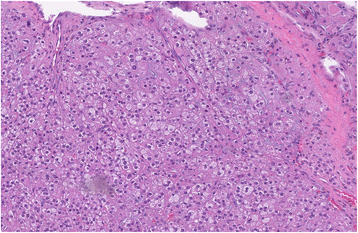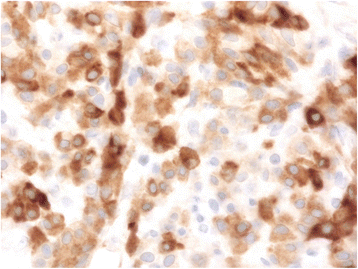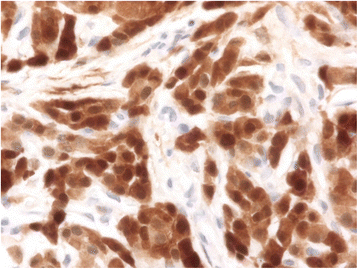Symptomatic Cushing's syndrome and hyperandrogenemia in a steroid cell ovarian neoplasm: a case report
- PMID: 27729065
- PMCID: PMC5059940
- DOI: 10.1186/s13256-016-1061-x
Symptomatic Cushing's syndrome and hyperandrogenemia in a steroid cell ovarian neoplasm: a case report
Abstract
Background: Malignant steroid cell tumors of the ovary are rare and frequently associated with hormonal abnormalities. There are no guidelines on how to treat rapidly progressive Cushing's syndrome, a medical emergency.
Case presentation: A 67-year-old white woman presented to our hospital with rapidly developing signs and symptoms of Cushing's syndrome secondary to a steroid-secreting tumor. Her physical and biochemical manifestations of Cushing's syndrome progressed, and she was not amenable to undergoing conventional chemotherapy secondary to the debilitating effects of high cortisol. Her rapidly progressive Cushing's syndrome ultimately led to her death, despite aggressive medical management with spironolactone, ketoconazole, mitotane, and mifepristone.
Conclusions: We report an unusual and rare case of Cushing's syndrome secondary to a malignant steroid cell tumor of the ovary. The case is highlighted to discuss the complications of rapidly progressive Cushing's syndrome, an underreported and often unrecognized endocrine emergency, and the best available evidence for treatment.
Keywords: Cushing’s syndrome; Ectopic cortisol; Hyperandrogenemia; Steroid cell ovarian neoplasm.
Figures




References
Publication types
MeSH terms
Substances
LinkOut - more resources
Full Text Sources
Other Literature Sources
Medical

